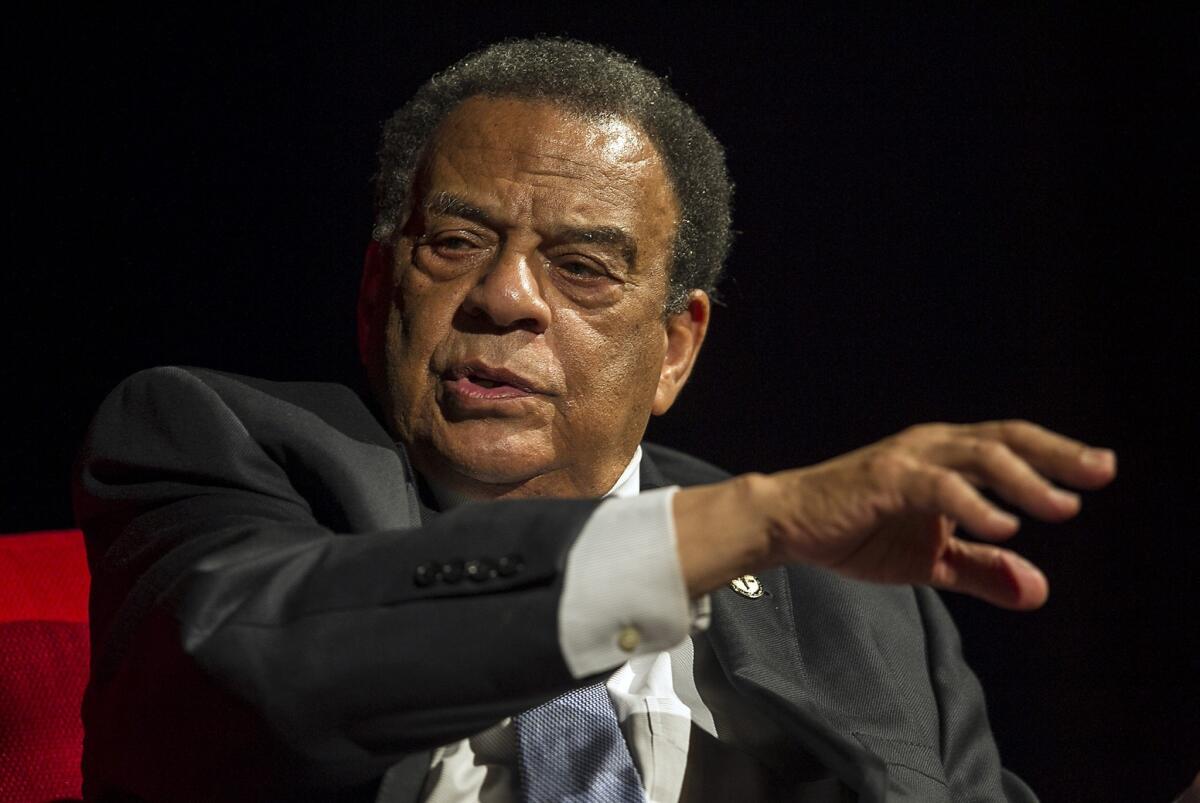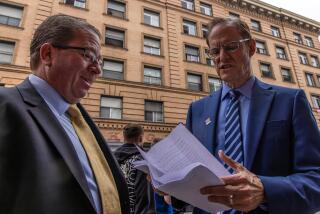Why putting photos on Social Security cards won’t save voting rights

A certain William Wachtel, the co-founder of WhyTuesday, an election reform group chaired by former UN Ambassador Andrew Young, wrote me over the weekend to complain that I treated Young harshly by criticizing his proposal to require Social Security to issue photo IDs. I called it “a terrible idea.”
Norman Ornstein, a political scientist at the American Enterprise Institute and another co-founder of WhyTuesday, also defended the proposal, which Young mentioned at an event last week marking the 50th anniversary of the Civil Rights Act. Ornstein mounted his defense via Twitter, which only made Young’s idea sound even shallower and more foolish.
What these gentlemen failed to do is explain why requiring Social Security to issue photo IDs is not a terrible idea. But since they seem to feel strongly about it--Wachtel even suggested that I owe Young a “public apology”; who knew seasoned diplomats could be so sensitive?--it’s proper for me to reinforce my point.
Young’s goal is to undercut efforts by Republicans in many states to discourage voting by enacting laws requiring voters to prove their identities with photo IDs. Since people who lack government-issued IDs are disproportionately minorities and the poor and probably tend to vote Democratic, you’d have to be blind not to see what’s going on here.
But as I wrote, Young has the wrong answer. His idea could undermine voting rights even more.
Before we get to that, let’s look at the cost of Young’s proposal. He asserts that photo IDs would cost Social Security “fewer than 10 cents a card.” It’s hard to know how he concocted that figure, because that’s not what the Social Security Administration says. According to a study the agency performed in the late 1990s at Congress’s directive, the unit cost for the physical card and photo would be 14 cents; but installing the necessary equipment in its 1,300 field offices, plus authenticating the photos, training personnel and processing the applications, would drive the cost to $15 or more per card.
The agency concluded that to cover that expense and others, it would have to charge $20 per card--in 1996 dollars. That’s if the entire country converted. Issuing photo IDs only to the smaller number of people who couldn’t get them any other way would obviously drive up the unit costs from all the needed infrastructure, possibly to prohibitive levels.
The agency was reluctant to impose such fees, considering that no one needs a Social Security card today to conduct any business with the Social Security Administration; the agency usually tells people who have lost their cards not to bother replacing them. (How many of you even remember the last time you saw yours?) Its conclusion was that people who need photo IDs should just get them at their local DMV. Also, it cast doubt on the notion that Social Security could be made to issue photo IDs by Presidential order, as Young suggests; the agency appears to believe the change requires Congressional action.
The pertinent parts of the agency’s review are here and here. Young, Ornstein, and Bill Clinton--who also endorsed the photo ID proposal--should read the document.
Ornstein declares that putting a photo on a Social Security card is easy as pie. “WhyTuesday quickly, easily, cheaply, did mock-up SS cards for Clinton, [Jimmy] Carter,” he tweeted. “Simply add photo to card.” (I have combined two of his Saturday tweets into a single statement.) He seems to think the process is no more complicated than pasting a snapshot on a Social Security card with Elmer’s glue and hey, presto! you have a voter ID. If he really believes that, let’s see him use one of WhyTuesday’s mock-ups to board an aircraft or, for that matter, to register to vote in a voting rights-challenged Republican state.
What Ornstein overlooks are the differences between a government-issued photo ID and the ones WhyTuesday cooked up in its arts-’n’-crafts room. Those differences include validation, authentication and anti-counterfeiting measures, just for a start. And they don’t come for pennies.
But the cost is just one drawback. The very worst thing about the idea of a Social Security photo ID is that it’s effectively a capitulation to the Republicans’ hopelessly dishonest and deceitful voter ID laws. The backers of these laws say photo IDs are necessary to combat voter impersonation fraud, but election experts say this claim is utterly bogus. Voter fraud is virtually nonexistent; a 2008 Supreme Court opinion on the topic had to reach back to 1868 and the Tweed Ring for a significant example.
The most learned and prominent federal judge ever to rule in favor of voter ID laws, Appellate Judge Richard Posner of Chicago, last year effectively recanted, having concluded belatedly that the law he had upheld in 2007 really is “a means of voter suppression rather than fraud prevention.” Posner now agrees that “requiring additional voter identification would actually disfranchise people entitled to vote.”
This is the high ground that Young, Ornstein and Clinton intend to cede to the enemies of voting rights. Why they think that capitulating to an openly fabricated claim about voter fraud will end the Republican attack on the electoral franchise is anyone’s guess.
To sum up, their proposal would saddle the Social Security Administration, whose customer service budget already is under relentless pressure from Congress, with a new administrative burden. They propose to transform the Social Security card, which today is largely informational, into the equivalent of a national ID, which will make the Social Security Administration an enormously unpopular national Big Brother. Their plan would do almost nothing to make photo IDs more easily available to anyone, because Social Security field offices, where people would have to report in person to obtain their IDs, are already vanishing from the landscape.
And they would do this in a way that actually would validate an indescribably deceitful attack on your voting rights and mine.
What a silly waste of time their idea is. Maybe they owe the rest of us a public apology.







